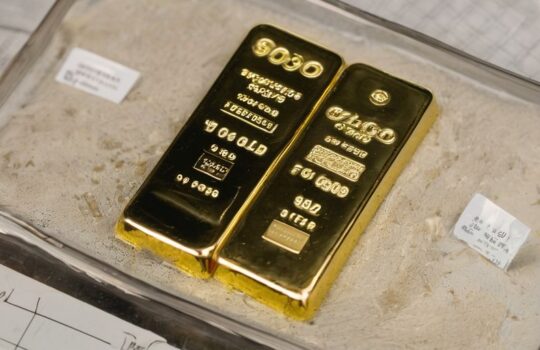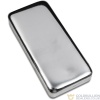Maximising Returns: A Guide to Selling Silver Bars in Today’s Marketplace

Selling silver bars can be a lucrative endeavour if done strategically. To maximise returns, it’s important to understand the current marketplace trends and best practises for selling silver. This guide will provide insights into selling silver bullion, silver coins, determining the value of silver, and the best practises for selling silver in today’s marketplace.
Key Takeaways
- Consider selling silver to online buyers for a higher price
- Ensure the amount you sell for is greater than what you initially paid to make a profit
- Sell silver when the market price is high due to increased demand
- The value of silver depends on market price and purity of the item
- Online buyers often offer better prices and quick turnaround for selling silver
Maximising Returns: A Guide to Selling Silver Bars
Selling Silver Bullion
When it comes to selling silver bullion, the process can be straightforward due to its high purity, usually at 99.9% silver content. This means that bullion can fetch some of the highest prices when sold. Ensure you are getting the best possible price by researching current market values and considering multiple buying options.
Pawn shops, cash-for-gold exchanges, jewellery stores, and online precious metals buyers are all potential avenues for selling your silver bullion. Each has its advantages and disadvantages:
- Pawn shops and cash-for-gold exchanges often provide immediate payment but may offer lower prices.
- Jewellery stores might offer better prices but are typically interested in pieces with aesthetic value.
- Online buyers can provide a wide market reach and competitive offers but require secure shipping and may have service fees.
Before finalising a sale, it’s crucial to compare offers and consider the reputation and reliability of the buyer. Selling online can be particularly beneficial as it allows you to reach a broader range of potential buyers and compare prices more efficiently.
Remember to account for any additional costs, such as shipping or insurance, when calculating your potential returns. By taking these steps, you can maximise your returns when selling silver bullion in today’s marketplace.
Selling Silver Coins
When it comes to selling silver coins, the market offers a variety of avenues, each with its own set of benefits. Jewellers, pawn shops, silver exchanges, and scrap metal buyers are common outlets for these transactions. However, the condition and rarity of the coins can significantly influence their value. It’s advisable to have your coins appraised to ascertain if they could fetch a higher price as collectibles rather than mere scrap.
Examples of silver coins that are often sought after include Kennedy half-dollars, Franklin half-dollars, and Morgan dollars, among others. Here’s a quick reference list of some popular silver coins:
- Kennedy half-dollars
- Franklin half-dollars
- Washington quarters
- Morgan dollars
- Peace dollars
- Liberty Head (Barber) quarters
When selling silver coins, remember that their historical and numismatic value can often exceed their metal value, especially for limited-edition or rare coins.
If you’re considering selling damaged coins, be aware that while most will retain value based on weight and purity, the condition can affect the price for rarer pieces. It’s essential to consult with a trusted coin buyer who can offer transparent pricing and a hassle-free selling experience.
Determining the Value of Silver
Understanding the value of your silver is crucial before you consider selling. The market price of silver fluctuates, so it’s essential to check the current rate. As of January 24th, 2023, silver was valued at $23.66 per ounce or $0.76 per gramme. This represents a significant increase over recent years, with prices rising by more than 20%.
To accurately determine the value of your silver, you’ll need to know its weight and purity. Silver items are often stamped with markings indicating their purity, such as ‘999’ for fine silver or ‘925’ for sterling silver. If your item lacks these markings, professional testing may be necessary.
When selling silver, always calculate its value based on the most recent market prices and the specific details of your silver items.
Here’s a simple guide to reading silver markings:
- 999: 99.9% silver, known as fine silver
- 925: 92.5% silver, known as sterling silver
- 900: 90.0% silver, known as coin silver
- 800: 80.0% silver, known as German silver
Remember, non-invasive tests can also help determine silver authenticity, such as checking for magnetic reactions or odours, which silver does not possess.
Best Practises for Selling Silver
When aiming to maximise returns from selling silver bars, it’s crucial to be well-informed and strategic. Understand the market dynamics and the factors that influence silver prices, such as global economic conditions and industrial demand. Selling when the market is favourable can significantly impact your profits.
To ensure you’re getting the best deal, compare offers from multiple buyers. This could include pawn shops, jewellery stores, online precious metals buyers, and cash-for-gold exchanges. Remember, bullion is typically 99.9% silver and may fetch higher prices due to its purity.
It’s essential to be aware of the buyer’s credibility and the security of the transaction. Reputable dealers will offer transparent pricing and a secure process.
Here’s a quick checklist to follow before selling your silver:
- Verify the current market price of silver
- Get your silver bars appraised
- Choose a reputable buyer
- Understand the buyer’s terms and conditions
- Keep an eye on market trends for the best selling time
By adhering to these best practises, you can ensure a smooth and profitable silver selling experience.
Conclusion
In conclusion, selling silver bars can be a lucrative endeavour if done strategically. By understanding the market trends, timing your sales effectively, and exploring various selling options such as online buyers and cash-for-gold exchanges, you can maximise your returns. Remember to consider the purity of the silver, current market prices, and demand fluctuations when deciding on the best time to sell. With the right approach, you can turn your silver bars into a profitable investment in today’s marketplace.
Frequently Asked Questions
Can I make money from selling my silver?
Absolutely! You can almost always find a buyer for precious metals. So long as the amount you sell for is greater than the amount you initially paid for the item(s), you will be making a profit.
When is the best time to sell silver?
When selling precious metals, you want to try and sell at a time when the market price for the metal is high. As demand for silver increases, so will the price of silver. Conversely, lower demand will reduce the market price of silver.
How much can I get for my silver?
The amount you can sell your silver for depends on factors like the current market price of silver and the purity of the silver in your item. The value changes regularly, increasing and decreasing based on the demand.
What is the value of silver? How do I check its current price?
The market price of silver as of January 24th, 2023, is $23.66 per ounce ($0.76 per gramme). In the last few years, the price of silver has increased by more than
How do I determine the value of my silver items?
You can calculate the value of your silver items by hand using the weight of the item, the purity of the silver (as a percentage), and the current price for silver. Alternatively, you can use an online silver calculator for a faster method.
What’s the best place to sell silver for cash?
Online buyers are often able to offer you more money for your silver items. At Cash For Gold USA, we offer the best silver prices with the quickest turnaround. We also provide free item shipping materials and ensure a smooth selling process.










